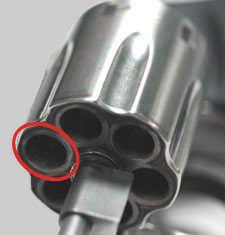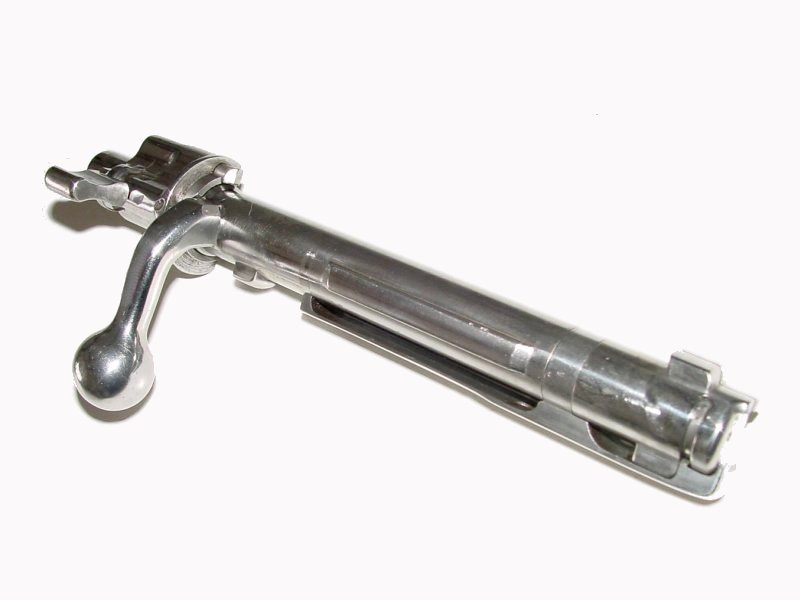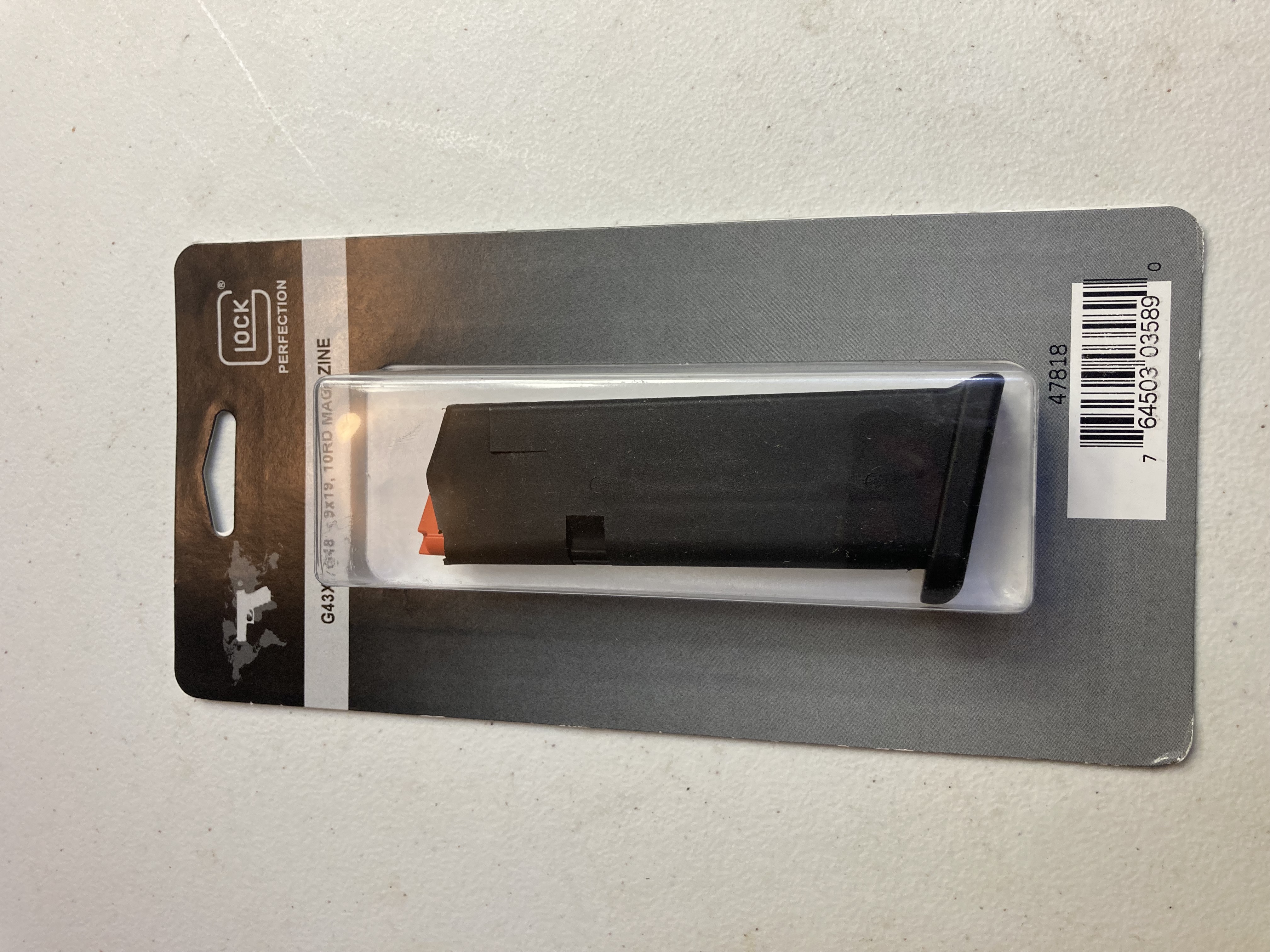Firearm Component Parts - What Trinidad Customs, Law Enforcement & Judiciary Need to Know

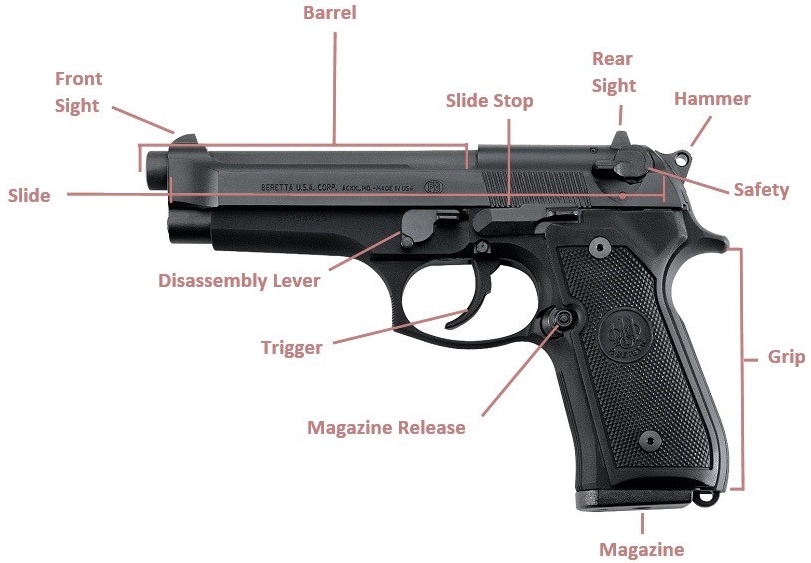
Fig. 1 Pistol Illustration
This Blog is written from the perspective of the interpretation of the Firearms Act Chap 16:01 of Trinidad & Tobago .
Slides Are Not Component Parts & Therefore Not Firearms
There is a significant distinction between Component Parts and Functional Parts of a firearm. This blog will educate you about why not all firearm parts are Component Parts and why knowing the difference between Component Parts and Functional Parts is important to Customs & Excise, TTPS, the DPP, Magistrates, Judges and Lawyers.
By the end of this blog you will be able to easily identify which firearm parts are Component Parts and which parts are just Functional Parts. You will learn why being in possession of functional parts of a firearm calls for additional investigation because simple possession of functional parts is not illegal. Possession of functional parts while not strictly illegal does satisfy probable cause to obtain a search warrant to find firearms or Component Parts.
In the definition of Firearm in Trinidad & Tobago’s Firearms Act 16:01, Component Parts are considered to be firearms. There is case law to support this. Pennie v Brown et. Al (TT 1966 CA 95) However, not all firearm parts are Component Parts.
Being in possession of a firearm part is only illegal if that part is a Component Part.
95% of TTPS Officers and Customs & Excise Preventative Officers will tell you that a Component Part is any of the internal parts and mechanisms of a firearm that makes it work. That is incorrect. What they are describing are functional parts. If you’re one of the 5% that know better, congratulations. Functional parts are all parts of a firearm that are necessary for its operation and include Component Parts. Component Parts are a subset of functional parts and there are only a few Component Parts.
Pennie v Brown et. Al (TT 1966 CA 95)
The case stated as follows:
“A firearm does not necessarily mean a weapon from which a shot, bullet or other missile can be discharged. What it means according to its definition is – “Any lethal barreled weapon of any description from which any, shot, bullet or other missile can be discharged and includes any component part of any such weapon.”
The following is the definition of Firearm reproduced here in verbatim from The Firearms Act 16:01
“firearm” means any lethal barrelled weapon from which ammunition can be discharged or any prohibited weapon, and includes any component part of any such weapon and any accessory to any such weapon designed or adapted to diminish the noise or flash caused by firing the weapon, but does not include any air rifle, air gun, or air pistol, of a type prescribed by Order made by the President and of a calibre so prescribed;
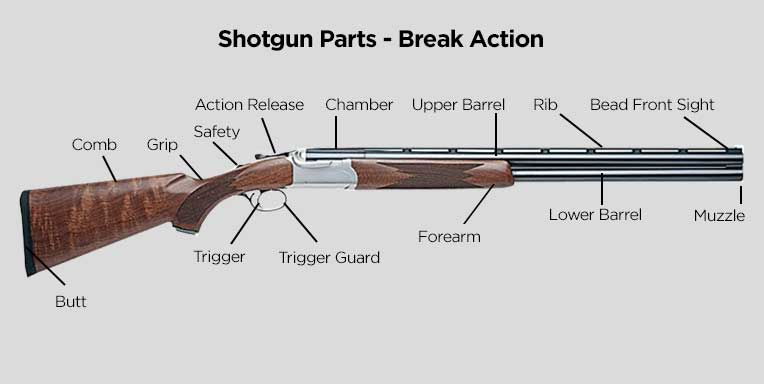
Fig. 2 Shotgun Illustration
Definition of Component Part.
From the definition of firearm derived from Pennie v Brown et. Al (TT 1966 CA 95), a Component Part on it’s own is considered to be a firearm. Therefore possession of a Component Part is possession of a firearm. A person not authorized to be in possession of that Component Part can be charged with the offense of being in possession of a firearm (Component). But what exactly is a Component Part?
The definition of Firearm in the Trinidad & Tobago Firearms Act Chap 16:01 includes the term Component Part however Component Part itself is not defined in the Trinidad & Tobago Firearms Act Chap 16:01. That doesn’t mean to say that it does not have a formal definition in law. Jurisprudence in Trinidad & Tobago is derived from the British legal system and the British Privy Council is still Trinidad’s highest court of appeal. Trinidad & Tobago’s Firearms Act Chap 16:01 is mirrored after the UK Firearm Act 1968. Component Part is defined in the UK Firearm Act 1968.
The UK Firearm Act 1968 has almost the identical definition of Firearm as the Trinidad legislation. The UK legislation’s definition of Component Part is found in Section 57 (1D) (a), (b) and (c). With respect to accessories that satisfy the definition of Component Part, Section 57 (1D) (d) and 57 (4) defines the few accessories that satisfy the definition of Component Part.
Component Part
57 1D) For the purposes of subsection (1)(c), each of the following items is a relevant component part in relation to a lethal barrelled weapon or a prohibited weapon—
(a) a barrel, chamber or cylinder,
(b) a frame, body or receiver,
(c) a breech block, bolt or other mechanism for containing the pressure of discharge at the rear of a chamber, but only where the item is capable of being used as a part of a lethal barreled weapon or a prohibited weapon.
There is only one accessory that is a firearm and it is described in the legislation at 571D)(d) & 571D) (4). We commonly refer to that accessory as a Silencer.
57 1D)
(d) an accessory to a lethal barrelled weapon or a prohibited weapon where the accessory is designed or adapted to diminish the noise or flash caused by firing the weapon;
57 1D) (4)
“shot gun” has the meaning assigned to it by section 1(3)(a) of this Act and, in sections 3(1) and 45(2) of this Act and in the definition of “firearms dealer”, includes any component part of a shot gun and any accessory to a shot gun designed or adapted to diminish the noise or flash caused by firing the gun.
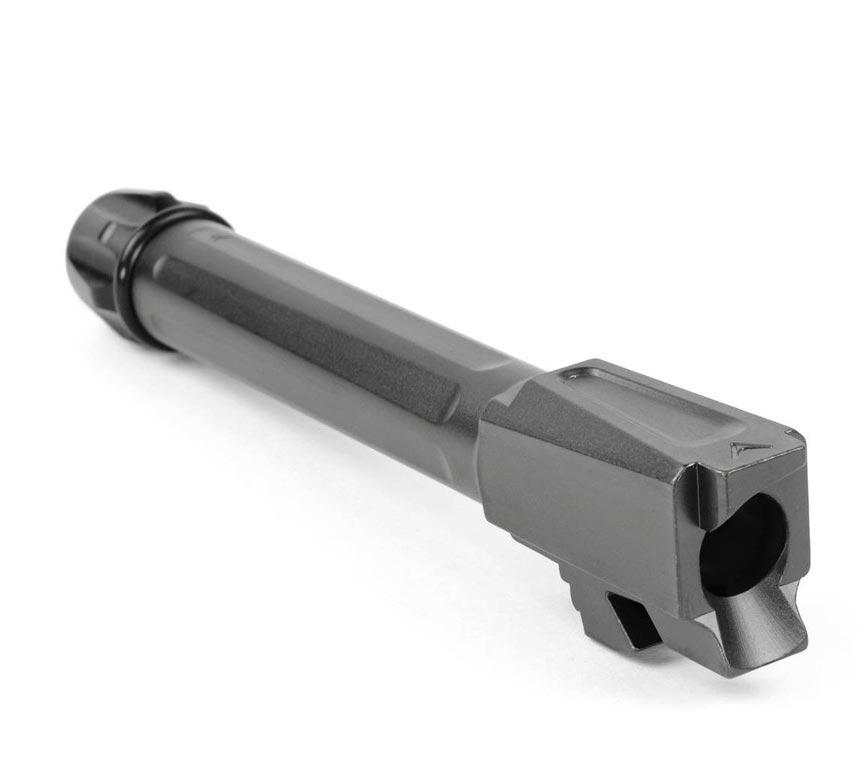 Fig. 3 Pistol Barrel - This is a Component Part |
Fig. 4 Revolver Cylinder - This is a Component Part |
Functional Parts vs Component Parts
Functional parts must not be confused with component parts. What’s the difference? All firearm parts are functional parts but only a few are component parts. Component Parts as defined in law are:
(a) a barrel, chamber or cylinder,
(b) a frame, body or receiver,
(c) a breech block, bolt or other mechanism for containing the pressure of discharge at the rear of a chamber, but only where the item is capable of being used as a part of a lethal barreled weapon or a prohibited weapon.
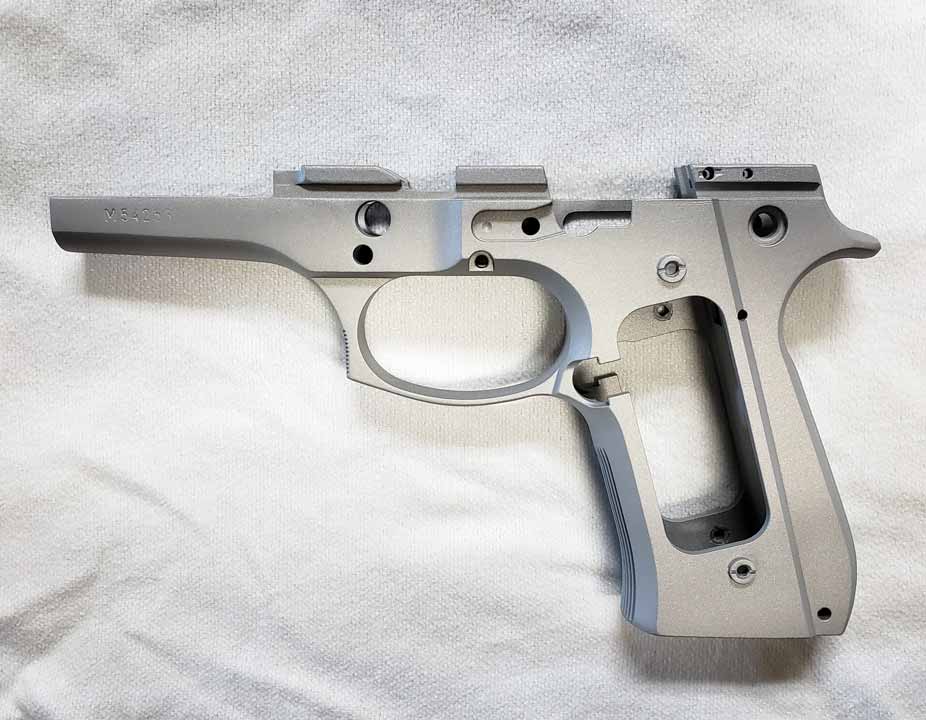 Fig. 5 Firearm Frame - This is a Component Part | 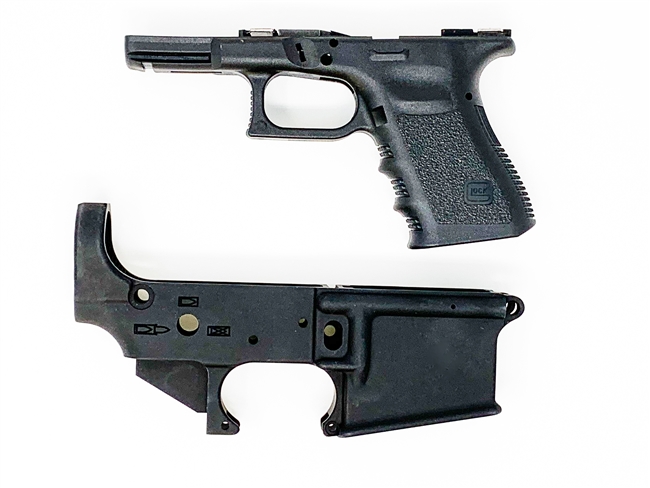 Fig. 6 Pistol Frame & Rifle Frame - These are Component Parts |
Fig. 7 Bolt Action Rifle Bolt - This is a Component Part |
Fig. 8 AR15 Bolt Carrier Group - This is a Component Part |
Therefore a magazine is not a Component Part, neither is a trigger, trigger spring, trigger bar, trigger shoe, firing pin, striker, striker assembly, recoil spring, connector or slide. The stock for a rifle or shotgun is also not a component part. Come to think of it, a magazine isn’t even a functional part; it is a functional accessory because the firearm can function without a magazine. The magazine is a convenience for chambering a round without having to manually insert one each time.
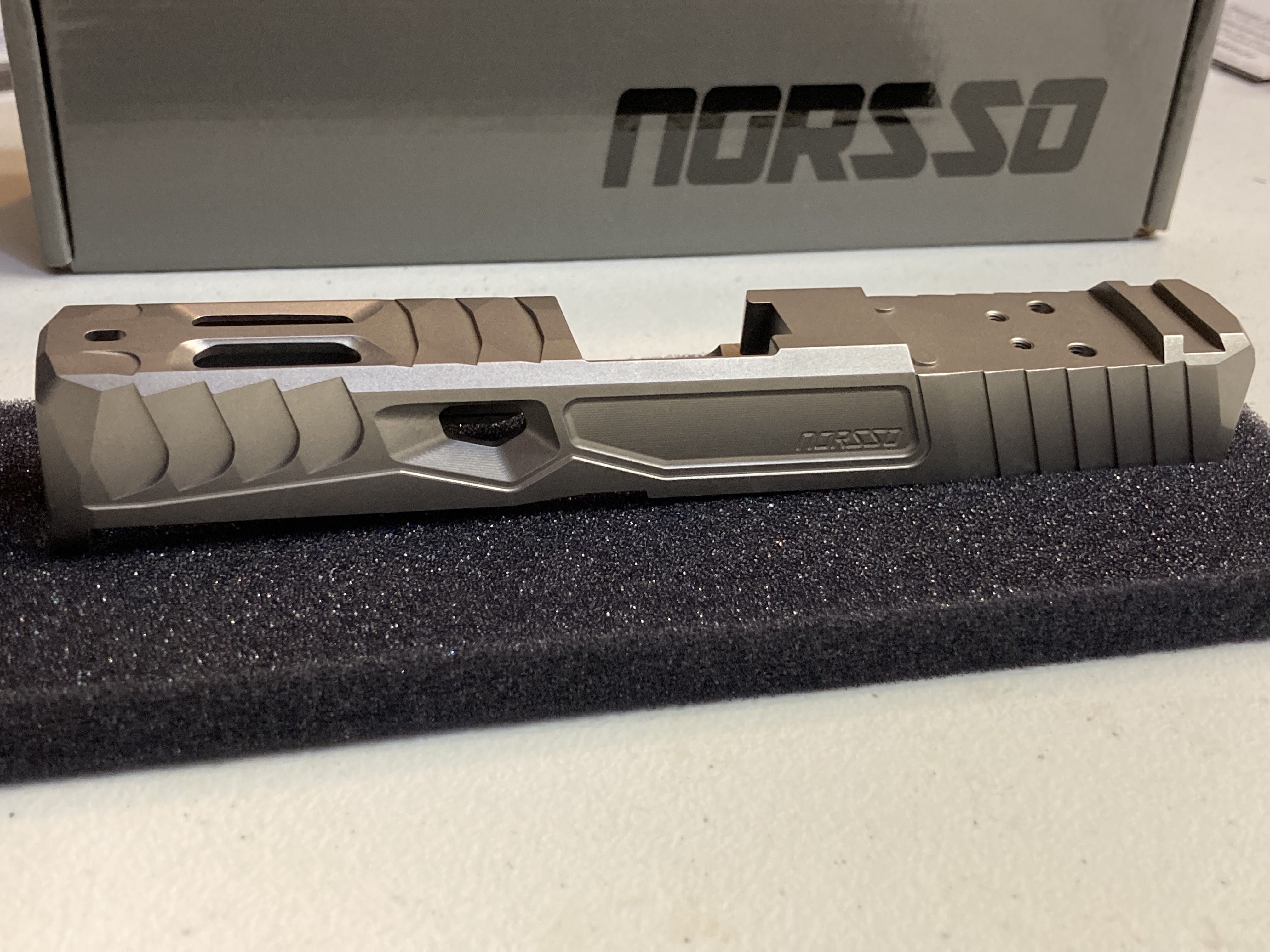
Fig. 9 Pistol Slide - This is a Functional Part, it is NOT a Component Part & is NOT a Firearm.
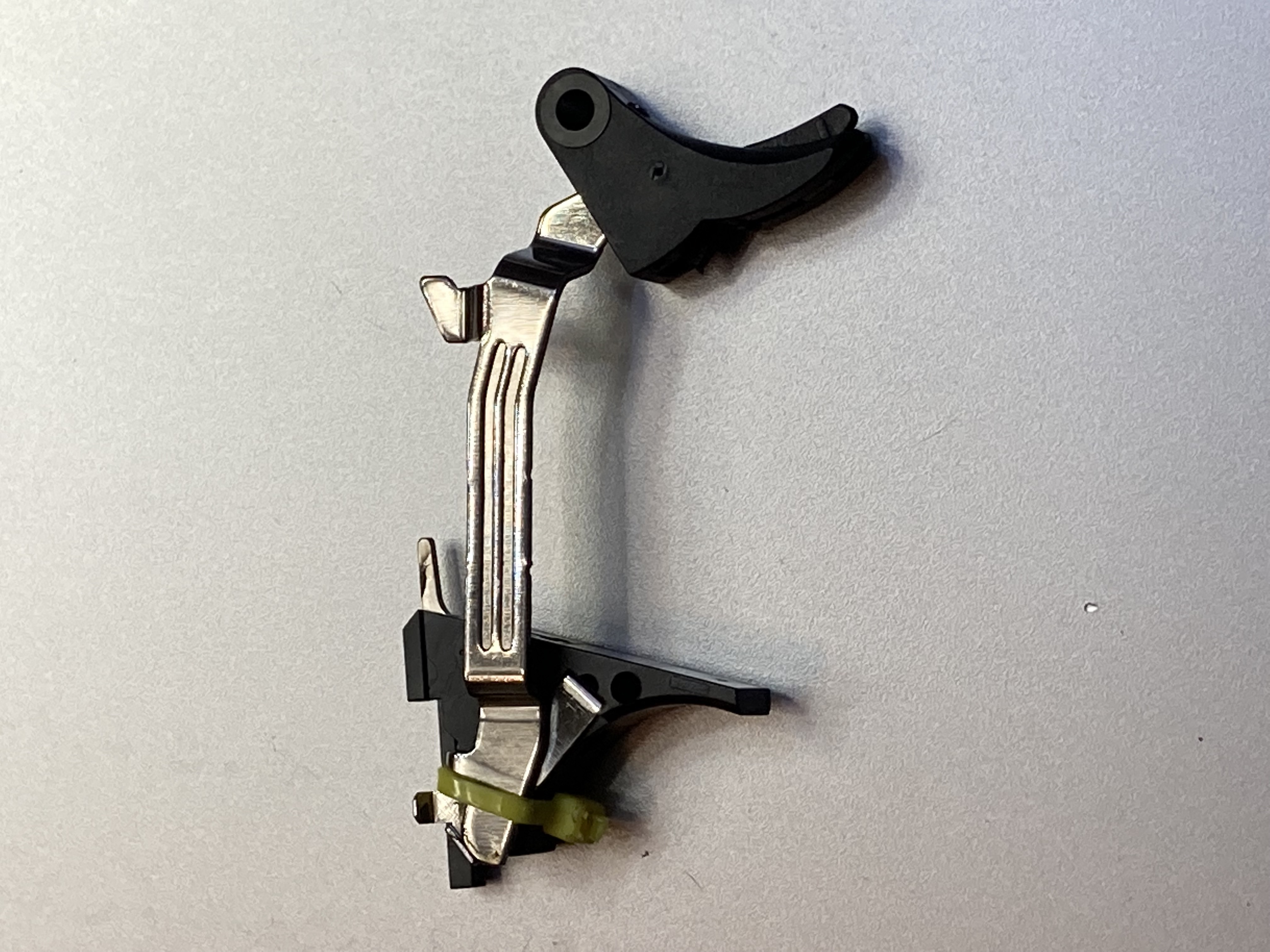 Fig. 10 Trigger Group - Not a Component Part |
Fig. 11 Pistol Magazine - Not a Component Part | 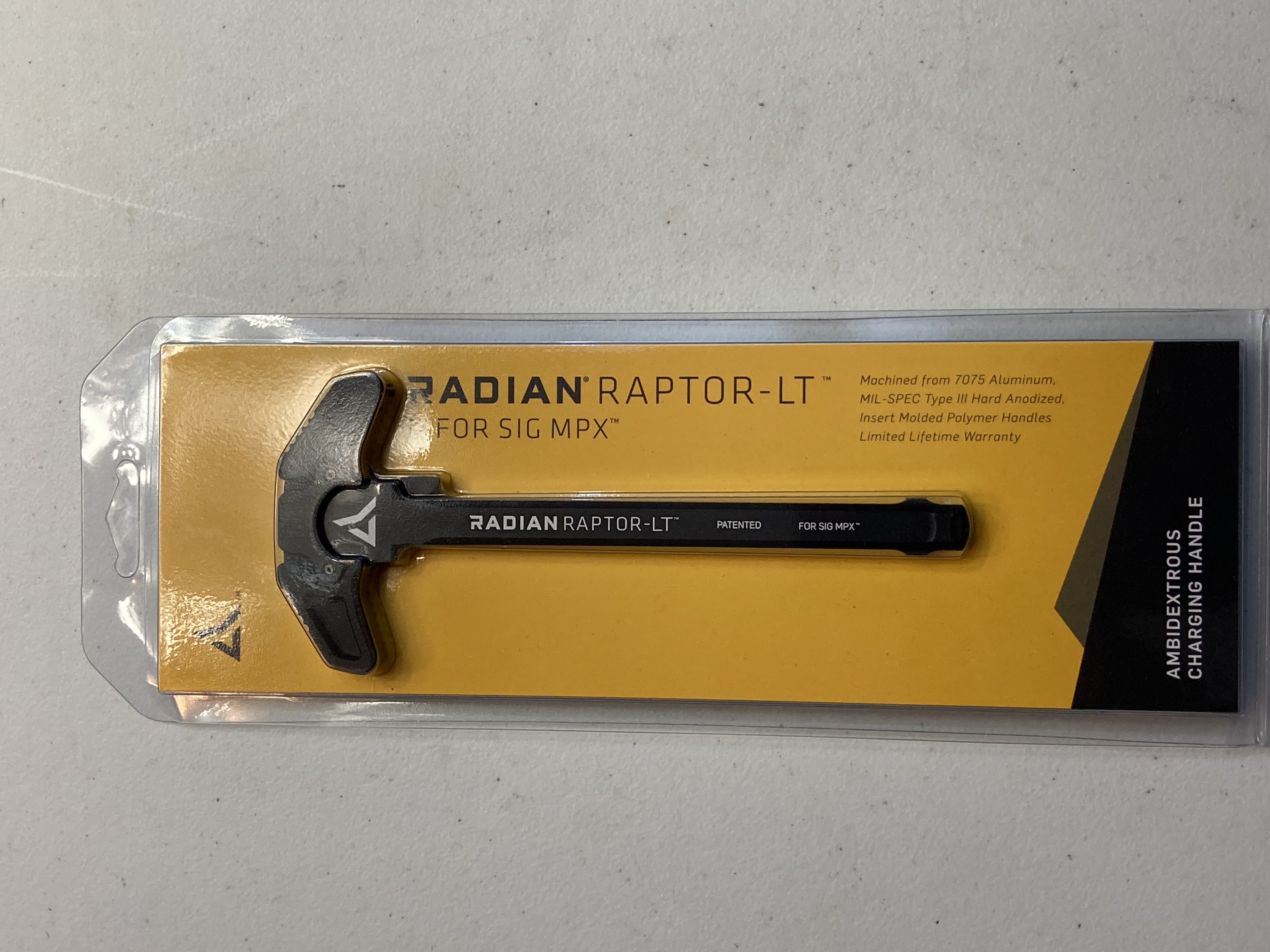 Fig. 12 PCC Charging Handle - Not a Component Part |
Problems Caused by Misinterpretation
Wrongful prosecution is perhaps the most extreme injustice that can result from the misinterpretation of the definition of Firearm and or Component Part. If someone with or without an FUL is found to be in possession of a Component Part without approval of the Commissioner of Police they can be arrested and charged for being in possession of a Firearm (Component). But what happens if the part is just a functional part and not a Component Part?
If the arresting officer, his supervisor or the DPP does not know what a Component Part is and wrongfully assumes that all firearm parts are Component Parts, people will be wrongfully prosecuted and will lose their reputation, their livelihood and their freedom because of a lack of knowledge. There have probably been people wrongfully convicted for possession of a firearm (component) who were actually in possession of firearm parts that were not Component Parts. Remember, only Component Parts are considered to be firearms. You might say that they were criminals anyway and they deserved to be jailed but we cannot prosecute people on what we feel the law should be. That is the definition of tyranny.
Another consequence or misinterpreting Component Parts for functional part is that legal firearm owners experience unnecessary bureaucracy at both the Customs & Excise Division and the TTPS Firearms Department when they lawfully import parts or accessories for their firearm.
We’ve received feedback about Customs & Excise requiring an import permit or approval from the Commissioner of Police to clear parts and accessories that are not Component Parts. There is nothing in law to support those requirements and no one can point to a single piece of legislation to support that position or requirement. When the part is not a Component Part all that should be required to clear the item is the presentation of an FUL and ID. When neither the Customs Officer nor the TTPS Firearms Department or CoP know what a Component Part is in law, it’s a recipe for frustration and maladministration. It’s not like law abiding FUL holders are hiding and sneaking to import parts. They are literally going to Customs & Excise and saying hey look at what I bought.
Consider this, an FUL holder can walk into any firearm dealership in Trinidad & Tobago and buy a part for a firearm without requiring permission from the Commissioner of Police except for his FUL. What’s different when importing the item himself ? Import Permits are only required for firearms and ammunition. It is not required for parts or accessories. A careful examination of the Import Permit application form found in the Firearms Act Chap 16:01, Form 12 and the Import Permit, Form 13 will show that the framers of the legislation never intended to restrict an FUL holder’s ability to import parts or accessories. All an FUL holder is required to do upon importation is show their FUL and satisfy the Customs Officer that the part or accessory is compatible with the firearm on their FUL. In practice however the process is murky, burdensome, frustrating and arbitrary.
The function of Customs & Excise is to examine the imported items and satisfy themselves that the description of the items matches the actual item, verify that the item(s) is compatible with the firearm on the importer’s FUL then apply the requisite duty and taxes. The job of Customs is not to frustrate the importer. Customs is not supposed to apply ambiguous procedures that are not published anywhere. Members of the public should not be subjected to arbitrary rules that are made up on the spot based on somebody’s mood or how the person in charge feels things should be. Again, that is tyranny and it seems like those in authority lack the confidence or competence to standardize the procedures, publish the procedures publicly and stick to it in order to give the process a level of transparency that is consistent with first world practice. Furthermore there ought to be a standard protocol to have complaints with the process immediately reviewed and reconsidered within hours. Delays cause frustration and defeat the ease of doing business. We have formally written to the Comptroller of Customs & Excise and the various office holders in the Customs & Excise Division requesting them to publicly publish the policies and procedures for clearing firearm parts and accessories and they have not had the professional courtesy to acknowledge receipt of our communication.
Public Officials cannot ban everything in the hope that citizens will not progress with the rest of the world like what obtains in North Korea. What they should do is properly, efficiently and equitably facilitate imports and generate revenue from import taxes. Right now the world has progressed to modular handguns like the Sig Sauer P320 and P365 with grip modules that do not contain any fire control components. The firearm itself is a central chassis system that can be swapped from one grip module to another and from one caliber to another. Grip modules ought not to be confused with frames because unlike frames, grip modules whether polymer or aluminum don’t have built in fire control components and are not Component Parts.
Corruption
Artificial shortage is the practice of making a process near impossible then soliciting bribes to grease the wheels to get the process to function for a fee. When there is efficiency, transparency and certainty of process, artificial shortage cannot be used as a tool of corruption. As long as there is frustration of any process and uncertainty of outcome or timeframe of outcome, bobol will reign.
A lot of energy is being spent on questioning firearms issued to law-abiding people and on restricting ownership by law abiding people. Undue negative pressure is also being applied on lawful importation of parts and accessories. The firearms used for murders, gangland shooting sprees, violent robberies and assassinations are all illegal weapons yet we’re not seeing the same emphasis on illegal firearms as we're seeing with those who went through the rigorous FUL process. Meanwhile illegal AR15 styled machine guns and handguns modified for fully automatic operation are flooding the street and are just as easy to obtain as a box of dead (that’s KFC if you’re reading this from the USA).
Feedback from some knowledgeable Police and Customs Officers is that they agree that FUL holders should not be frustrated with burdensome bureaucracy like getting an approval from a CoP for the importation of non-Component Parts especially when in their opinion and mine, the CoP isn’t keen on providing the import approvals. But no one wants to be the one to stand on principle and inform the Commissioner and the Comptroller of Customs & Excise that an Import Permit or approval of the Commissioner of Police is not required for the importation of non-component parts and accessories by FUL holders. Some have said that based on the current atmosphere, now is not the right time to raise the issue however law abiding firearm owners are not the problem.
The FUL application process is fraught with uncertainty of outcome and timeline, making conditions perfect for corrupt elements. After all the audits we’ve not seen any recommendations for modernization of the process using technology to add transparency to the existing process. What then is the value of an audit that doesn’t identify shortcomings and recommend improvements?
By now applications should begin online with each application given a tracking number that the applicant can use to track the progress of their file online. Each segment of the process ought to be given a specific timetable for completion so that when a process is taking longer than the standard time, an applicant can see where it is stalled using the tracking number. The benefit of tracking applications is transparency and internal performance appraisal of TTPS employees who are either getting their jobs done on time or are delinquent and delaying the process. In one paragraph we've recommended what no leaked audit report has suggested.
TTPS Legal Services
In October 2021 we engaged the TTPS Legal Services in dialog concerning the interpretation of Firearm as defined in the Firearms Act Chap 16:01. Unlike our dealings with the ATF in the USA, it’s been our experience that TTPS is deliberately slow to respond, non-committal in their communication and unreliable whenever they commit to responding by a particular date. What would have taken us five minutes or less to clarify on the phone with the ATF has taken us 11 months so far with TTPS Legal Services and up to now, we still do not have a clear answer from them. There is however one attorney there who has always communicated clearly, kept every single deadline she set and generally demonstrated top class professionalism. Her name is Deputy Director Rivas and we wish that she were the one tasked to handle our matter.
Conclusions
In Trinidad Society, the older heads still view a firearm as a status symbol instead of a tool of self-defense. You see back in their day you had to be somebody to get a gun; a high ranking official or someone of significant wealth. Their belief system is that a rich man’s life is worth more than yours. Those people got firearms just because the privilege was afforded to them and they could use the fact that they had one to socially outrank someone else at the country club while the firearm was kept locked away in a safe all the time. The new era of people without high social status becoming firearm owners bruised the fragile egos of those longstanding socialites that viewed the new dispensation as somehow diminishing their artifacts of social status. For others they saw it as devaluing the gift they got in exchange for their million dollar political patronage. Either way, they sought to stop it at all cost and to hell with people who actually need firearms for self-defense.
The Prime Minister himself described Trinidad as a violent society yet the actions of his government are inconsistent with affording law-abiding citizens the means to adequately defend themselves and their family at a level commensurate with the level of security threat facing them.
Two things are present in every violent crime in Trinidad, a motor vehicle and an illegal firearm. Giving law abiding civilians firearms is one solution that deserves priority in order to bring about a balance that tips the scales of civility in favor of the law abiding. Another solution is revoking the driving permits of everyone charged with a violent crime until the determination of their matter and banning those convicted of violent crimes from driving for a period of five years from the date of conviction. For those sentenced to a period of incarceration of more than two years, the five years ban will commence after release. Restricting the mobility of violent offenders is an effective strategy used in some jurisdictions and it is simple to implement. Get caught driving during the period of revocation and get locked up for five years. This will help keep violent offenders either incarcerated or in the passenger seat.
Both the TTPS and the Customs & Excise Division owe it to the public they serve to retool their skills to understanding the difference between Component Parts & Functional Parts and providing first world levels of services to the public they serve. Customs & Excise ought to publish their procedure for clearing firearm parts and accessories publicly and stick to it. TTPS need to stop making it difficult for law abiding FUL holders to import and clear their parts and accessories. By forcing people to go underground they will find a way to get around the bureaucracy and obstacles and in doing so, they will end up unwittingly cutting track for criminal Gouti to run.
Magistrates, Judges and Lawyers need to understand firearms and firearm parts so they are able to distinguish the difference between Functional Parts and Component Parts. They also need to become familiar with the definitions at law so they know why a Slide, a magazine, a trigger and some other functional parts are not Component Parts. The DPP needs to know the specific questions to ask police investigators concerning parts when they bring a file for possession of firearm component parts.
If you need any clarification or additional information or have a recommendation or suggestion, you can reach us at customercare@sasmansales.com
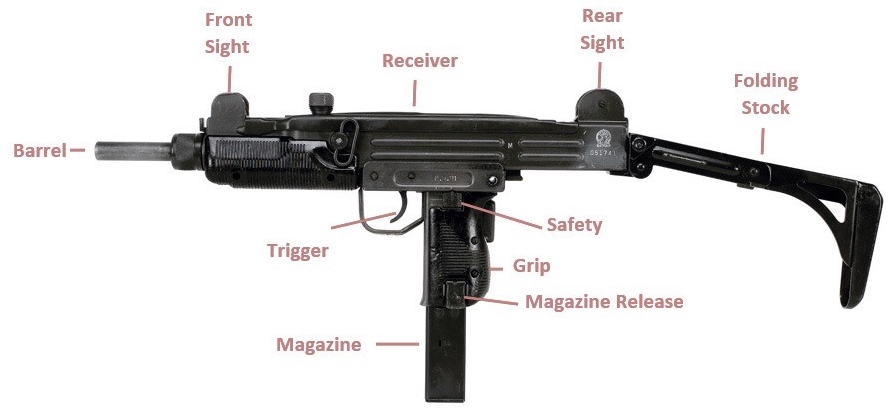
Fig. 13 Sub Machine Gun Illustration
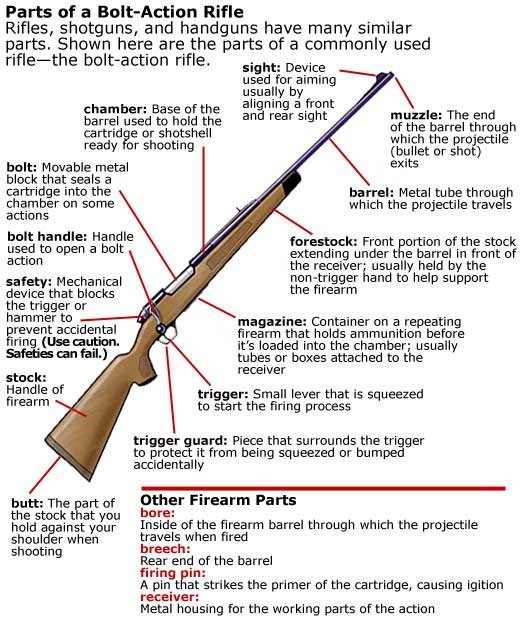
Fig. 14 Bolt Action Rifle Illustration
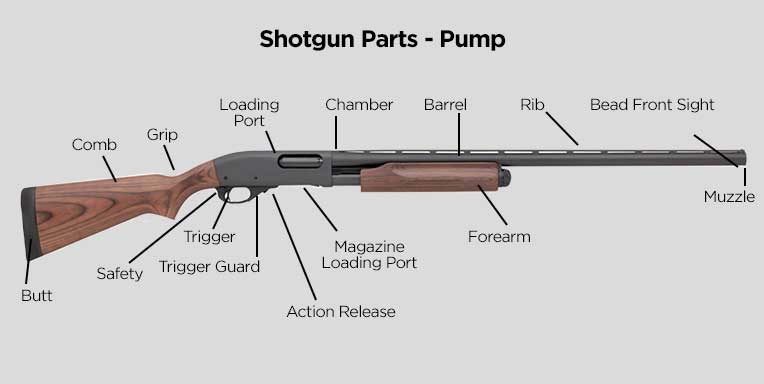
Fig. 15 Shotgun Pump Action Illustration

Fig. 16 Rifle Barrels - These Are Component Parts

